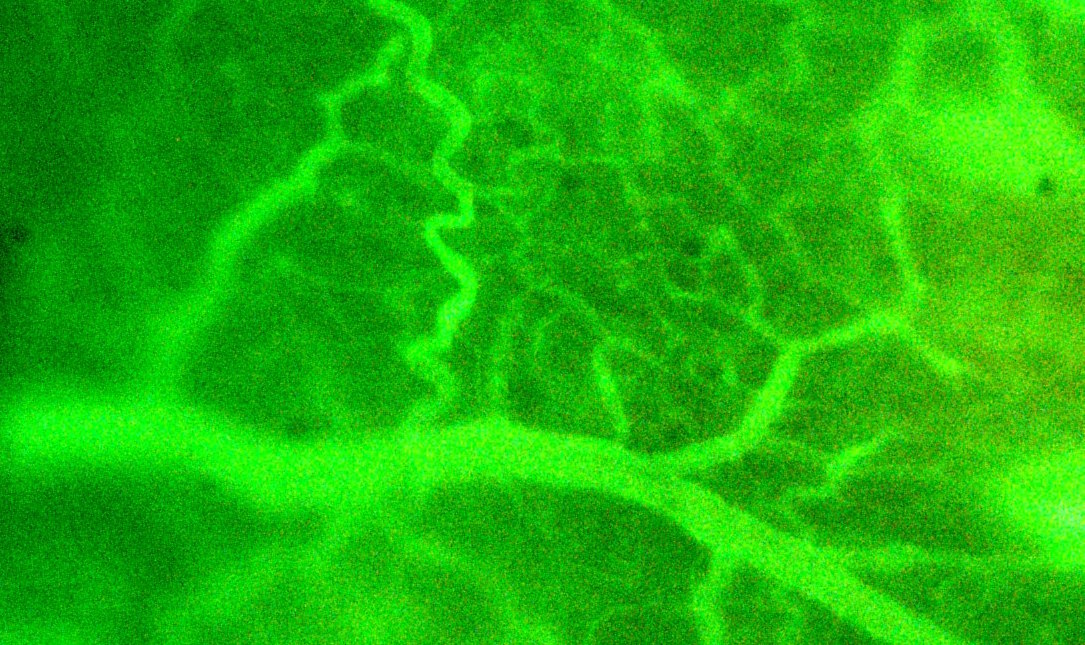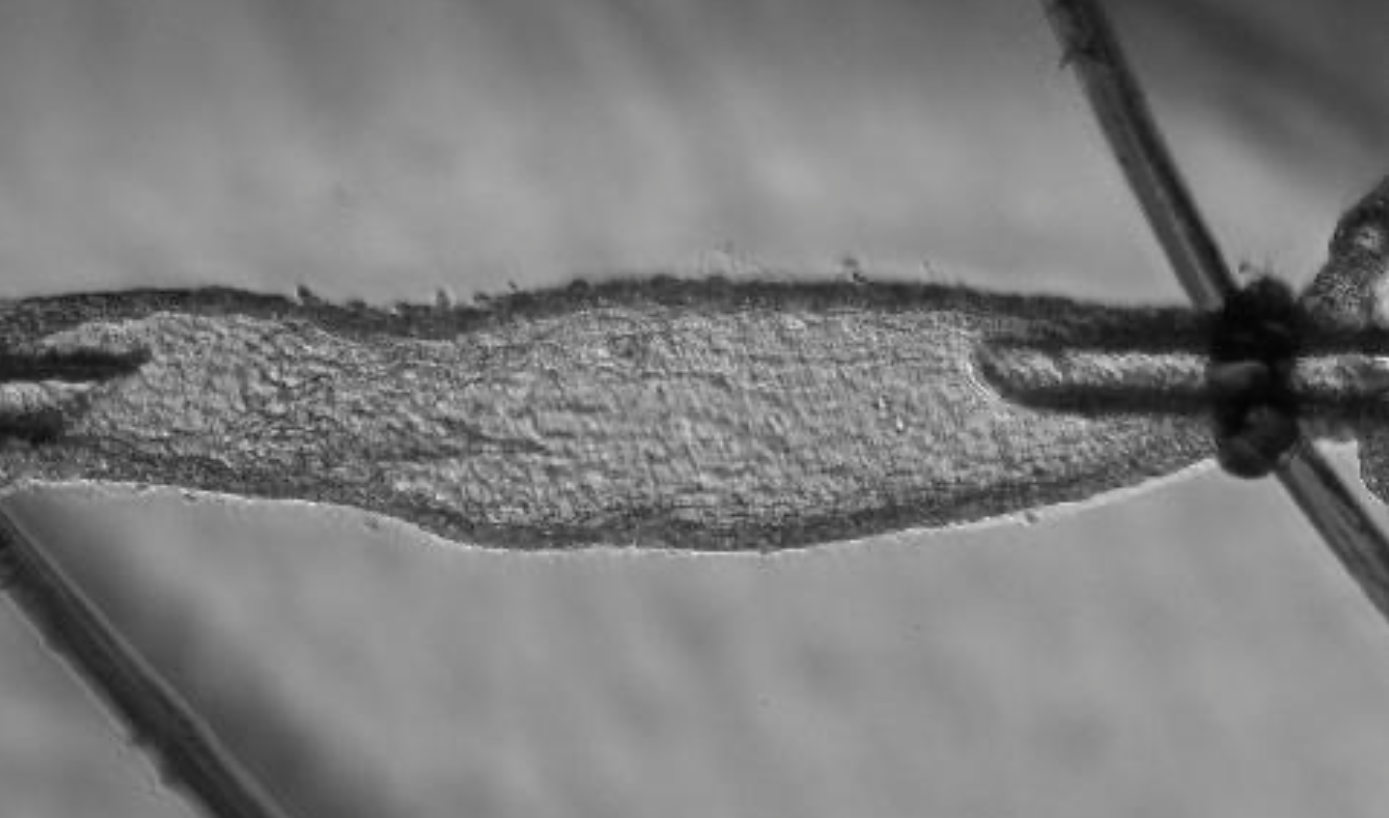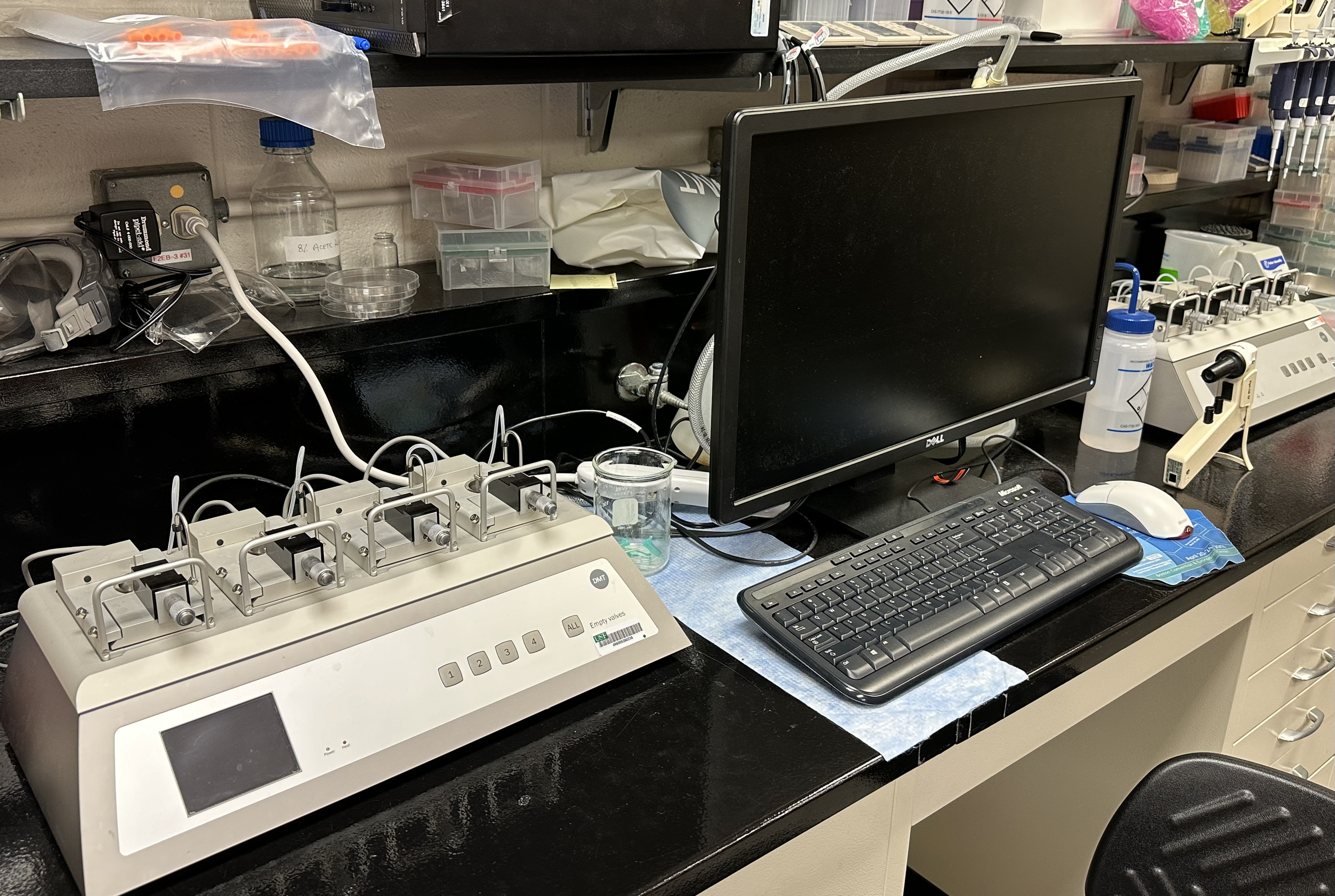Research
We have a strong commitment to scientific discovery that connects changes at the molecular or cellular level to the pathophysiology of inflammation at the tissue or organ level. Our focus is on the microcirculation and lymphatics, two fundamental vascular systems that play a significant role in all diseases.
Mechanisms Underlying Microvascular Hyperpermeability
 Excessive microvascular leakage of plasma proteins occurs in multiple pathologies and is a hallmark of the systemic inflammatory response following traumatic injury. Our long-term goal is to identify novel targets that can be used to ameliorate microvascular leakage. To achieve this goal, the current knowledge of the cellular and molecular signals that control microvascular permeability must be significantly expanded, including signals that promote hyperpermeability and those that promote resolution toward normal barrier function. To significantly expand the current knowledge base of how microvascular hyperpermeability develops and is resolved, our laboratory team is capitalizing on emerging multi-omic approaches that have become more widely available, which provide unbiased analysis of changes in expression of genes and the molecular landscape. Applying these methods to experimental models of trauma or cells/tissues from trauma patients will identify novel molecules associated with trauma-induced microvascular hyperpermeability that will reveal answers to key questions that must be addressed in order to advance new therapies. We also utilize clinically relevant rodent model of combined alcohol intoxication and hemorrhagic shock/resuscitation, supported by cultured endothelial cell models that will increase the depth of understanding about how the microvascular endothelium responds to trauma/shock. Our recent work has identified that sphingosine-1-phosphate (S1P), a bioactive peptide present in plasma, promotes tightening of the endothelial barrier and reduces microvascular hyperpermeability caused by experimental hemorrhagic shock. At the molecular level, S1P appears to prevent mitochondrial disruption in endothelial cells, and in turn protects cell-cell junctions between endothelial cells. Our currently funded work is exploring the relationship between S1P and its carrier protein, apolipoprotein M, and their combined impact on endothelial barrier function.
Excessive microvascular leakage of plasma proteins occurs in multiple pathologies and is a hallmark of the systemic inflammatory response following traumatic injury. Our long-term goal is to identify novel targets that can be used to ameliorate microvascular leakage. To achieve this goal, the current knowledge of the cellular and molecular signals that control microvascular permeability must be significantly expanded, including signals that promote hyperpermeability and those that promote resolution toward normal barrier function. To significantly expand the current knowledge base of how microvascular hyperpermeability develops and is resolved, our laboratory team is capitalizing on emerging multi-omic approaches that have become more widely available, which provide unbiased analysis of changes in expression of genes and the molecular landscape. Applying these methods to experimental models of trauma or cells/tissues from trauma patients will identify novel molecules associated with trauma-induced microvascular hyperpermeability that will reveal answers to key questions that must be addressed in order to advance new therapies. We also utilize clinically relevant rodent model of combined alcohol intoxication and hemorrhagic shock/resuscitation, supported by cultured endothelial cell models that will increase the depth of understanding about how the microvascular endothelium responds to trauma/shock. Our recent work has identified that sphingosine-1-phosphate (S1P), a bioactive peptide present in plasma, promotes tightening of the endothelial barrier and reduces microvascular hyperpermeability caused by experimental hemorrhagic shock. At the molecular level, S1P appears to prevent mitochondrial disruption in endothelial cells, and in turn protects cell-cell junctions between endothelial cells. Our currently funded work is exploring the relationship between S1P and its carrier protein, apolipoprotein M, and their combined impact on endothelial barrier function.
Impact of Metabolic Syndrome on Lymphatic Pumping

Several lines of evidence suggest two-way communication between lymphatic vessels and surrounding adipose is important for normal metabolic function. Currently, little is known about how mesenteric lymphatic vessels are altered both structurally and functionally in humans with metabolic syndrome. Our laboratory group has developed novel protocols to study human mesentery and lymphatic vessels derived from organ donors with or without metabolic syndrome. Collecting lymphatic vessels are dissected from the mesentery, mounted on glass micropipettes, and pressurized in a physiology bath. The vessels form spontaneous, phasic contractions similar to those observed in vivo. In preliminary studies, we have observed that vessels obtained from donors with type 2 diabetes combined with obesity do not contract as vigorously as those from healthy donors. We have also begun performing single-nucleus RNA sequencing (snRNA-Seq) with mesentery from these donors to identify transcriptomic changes that underlie lymphatic vessel dysfunction. The rationale for this approach is that the findings will enable a leap forward in knowledge about the lymphatic-visceral adipose axis that is directly relevant to humans.
Alcoholism, Sigma Receptors, and Arterial Function
 We are studying how sigma receptor agonists and antagonists affect vascular tone. In partnership with LifeLink, we are using human mesenteric arteries from organ donors, and are exploring how past alcohol use impacts sigma receptor expression and function. The sigma receptors 1 and 2 are chaperone proteins that have been shown to be modulators of alcohol drinking behavior in rodents, but are also abundantly expressed in vascular tissues. Our previous research identified that the sigma receptor agonist afobazole could cause relaxation of lymphatic vessels. In the current study, we are investigating how a sigma receptor-1 selective agonist, PRE-084, affects tone of mesenteric arteries from human organ donors. In most cases, we observe that PRE-084 promotes relaxation of arteries. However, we observed that PRE-084 often does not have this property in arteries from donors that had histories of heavy alcohol consumption. We are currently investigating whether sigma receptor expression or downstream pathways are altered by alcohol consumption.
We are studying how sigma receptor agonists and antagonists affect vascular tone. In partnership with LifeLink, we are using human mesenteric arteries from organ donors, and are exploring how past alcohol use impacts sigma receptor expression and function. The sigma receptors 1 and 2 are chaperone proteins that have been shown to be modulators of alcohol drinking behavior in rodents, but are also abundantly expressed in vascular tissues. Our previous research identified that the sigma receptor agonist afobazole could cause relaxation of lymphatic vessels. In the current study, we are investigating how a sigma receptor-1 selective agonist, PRE-084, affects tone of mesenteric arteries from human organ donors. In most cases, we observe that PRE-084 promotes relaxation of arteries. However, we observed that PRE-084 often does not have this property in arteries from donors that had histories of heavy alcohol consumption. We are currently investigating whether sigma receptor expression or downstream pathways are altered by alcohol consumption.
Summer Undergraduate Research Training
 Since 2018, Dr. Breslin has accepted summer undergraduate research trainees under two programs. First, undergraduates who are at the academic level of junior or higher and who are eligible to work in the U.S. may apply for a USF Cardiovascular Summer Undergraduate Research Fellowship sponsored by the American Heart Association. Second, USF majors in Biomedical Engineering may also apply through their department for a summer research fellowship. Students in our laboratory get the opportunity to present their work at USF Health Research Day and in some cases at national meetings. Past students have gone on to pursue PhD or MD degrees or work in industry. Please note that these undergraduate research opportunities are paid positions and the Breslin Lab does not accept volunteer applications from undergraduate students.
Since 2018, Dr. Breslin has accepted summer undergraduate research trainees under two programs. First, undergraduates who are at the academic level of junior or higher and who are eligible to work in the U.S. may apply for a USF Cardiovascular Summer Undergraduate Research Fellowship sponsored by the American Heart Association. Second, USF majors in Biomedical Engineering may also apply through their department for a summer research fellowship. Students in our laboratory get the opportunity to present their work at USF Health Research Day and in some cases at national meetings. Past students have gone on to pursue PhD or MD degrees or work in industry. Please note that these undergraduate research opportunities are paid positions and the Breslin Lab does not accept volunteer applications from undergraduate students.
Laboratory Collaborations
Dr. W. Lee Murfee, University of Florida
Dr. Michiko Jo, University of Toyama
Dr. Walter N. Duran, Rutgers University
Dr. Niketa Patel, University of South Florida
Dr. Bi Zhao, University of South Florida
Dr. Min Zhang, University of South Florida
Dr. Sarah Yuan, University of South Florida
Dr. Ying Yang, University of South Florida
Dr. Joshua Scalln, University of South Florida
